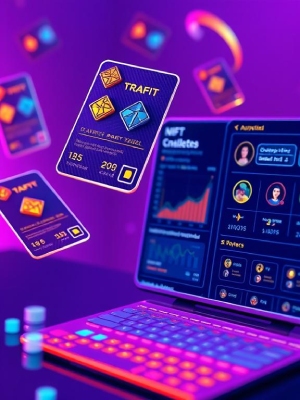NFTs (standing for "Non-Fungible Tokens") have unceasingly evolved as a class of digital assets combining art, technology, and collectibles. Whether just forth into the realm of NFTs or well versed in the craft, one will almost certainly come upon the term "NFT rarity ranking." This essentially determines the desirability and value of NFTs. Knowing what NFT rarity rankings are and how they matter will be an asset to anyone involved in this space, along with ways to determine them.
Key Features of NFT Rarity Rankings

An NFT rarity ranking is a mechanism for classifying and evaluating the relative rarity of an NFT within a certain collection or project. Each NFT in a collection is unique, often on a combination of traits chosen from various parameters (say, background color, accessorizing element, or even a facial expression). Each of these traits can either be common or rare, depending on the scenario and rarity rankings that come in handy for buyers, collectors, and investors in order to determine the level of rarity of the particular NFT in contrast to others of the same collection.
- Trait Rarity: This measures how rare certain features are within an entire collection.
- Statistical Algorithms: Usually, complex algorithms compare the various features of the NFTs in a collection with each other to arrive at levels of rarity.
- Community Influence: Sometimes, the opinion of the community or the market trends can shape the perceived rarity of a type of NFT, elevating its demand.
The Importance of NFT Rarity Rankings
There are several reasons why a rarity ranking remains important, especially for a collector or an investor. The following are just some of the reasons why they count:
Rarity Influence on Value
The market value of an NFT is largely influenced by its rarity. A higher rarity rating means a higher price, as items are considered very few and unique. Just as in the real world, when a collector would want to pay an extra dollar for very rare collectibles, having a rare item will definitely fetch others a lot of money. Buyers and sellers use an NFT rarity ranking as a measure of setting a reasonable price for the item in question.
Investor Advisories
An investor interested in NFT rarities usually considers the rarity rankings to estimate the possible market value over time. Highly-ranked NFTs in a popular collection are considered to have a higher chance of going up in value, given their rarity and demand. An investor who understands rarity rankings will be able to buy and hold on to NFTs that have a stronger chance of appreciating over time.
Informed Collection
Rarity rankings aid collectors in purchasing selections better. Most collectors are concerned about the looks of an NFT and its rarity. Knowing how rare an NFT is enables them to make decisions influenced by factors aligned with their personal collecting goals, whether that is to collect rare items or to own a unique NFT.
Market and Demand
Rarity rankings usually mirror more general trends within the market and demand specific to certain NFTs or NFT collections. Whenever a trait or ranking gains momentum for itself, it creates demand for NFTs featuring such traits. For example, if background color or rare accessories become highly sought after, those NFT attributes may see rise in value and demand.
How to Assess Rarity in NFTs

To determine an NFT's rarity, one has to analyze the traits of the NFT and comprehend how they relate to other NFTs of the same collection. Here is a step-by-step method to determine the rarity of an NFT:
Identify the Traits
There are traits to define and separate the NFTs within a collection. These traits can speak to visual elements such as background, cloth, accessories, or even animation. Some traits are more common than others, and those that appear less frequently in a collection are considered rarer.
Use Rarity Tools
Many Internet-based services are made to assign rankings to NFT rarity. These tools use algorithms to compare traits in a collection and assign a rarity score to each NFT. Among popular few tools are Rarity.tools, Rarity Sniper, and NFT.Genius. The sites take input data from various NFT marketplaces and rank them on their respective rarities for each NFT.
Look into the Marketplaces
Many marketplace websites like OpenSea or Rarible provide an NFT rarity ranking within the collection. This ranking may give you an immediate snapshot of how rare an item is in respect of its traits. Some even give you a lineup SOLD LISTABLE Rarities, which helps you find the rarest NFTs currently for sale.
More Than Just a Number
With NFT rarity ranking giving insight into the scarcity and desirability of digital assets, keeping plants, investors, and anyone out of the NFT market on the right path to buying, pricing, and ultimately worth. Whether you truly start collecting or consider yourself an experienced investor, knowing how to rank the rarity of an NFT will help guide you through this charming digital landscape.
